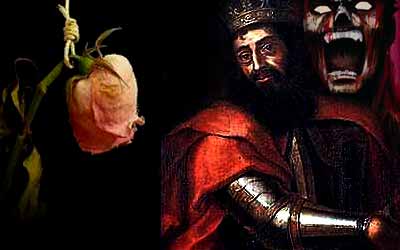By : Ayad Attar
Most of the people in the Arab world know almost nothing about Portugal, except that it is the country of Cristiano Ronaldo, and that it has a wonderful football team. They are right in this, for whenever we hear the Iberian Peninsula, which encompasses both Spain and Portugal; all that comes to our minds is Spain. Even when we remember Andalusia, Spain is the first name to cross our minds. The neighboring Portugal remains almost unheard of, even in the news, as if it was a country from another planet.
Therefore, I decided to bring you a story that will familiarize you with Portugal and its history. It is the story of a king that the people named “The Cruel” for his bloodiness and the severity of his punishment. Yet, he was not cruel, at least not in his early life. Cruelty is not something innate in human beings. It may be acquired, and it may result from a bitter experience or a profound psychological shock. That is exactly what happened to the protagonist of our story. He had a good heart brimming with love and tenderness. However, they crushed him, turned him into a ruthless monster.
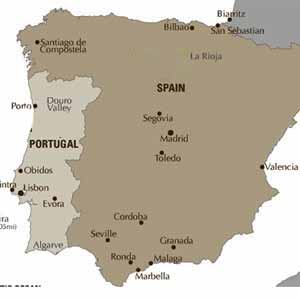
Let us cut the talking and step directly into the royal palace in Lisbon where the King of Portugal Afonso IV is sitting on his majestic throne.
The king’s face was red. He was outraged as he was looking at his son and heir of his throne, Prince Peter.
Prince Peter was bowing at the feet of his father disgraced and humiliated. There were only the two of them in the throne hall. There were two guards standing motionless at the entrance.
“Please, Dad, don’t force me into something that I don’t want,” said Prince Peter imploringly.
The king yelled at him,” You must marry her… Do not you argue with me… This is an order”
Then the prince stood in disapproval of his father’s proposal, “for heaven’s sake, how am I supposed to marry her? She is the ex-wife of my sister’s husband?
“So what, he has divorced her, and she is now available,” the king argued.
“But why this and only this woman, Dad?” The Prince said, wondering.
“I want to teach that bastard, your sister’s husband, Alfonso XI of Castile, a lesson… Our spies say that he mistreats my daughter and takes mistresses in public, disrespecting your sister in spite of her giving birth to their heir” said the king angrily, and continued, “And don’t forget that her father is one of Castile’s most influential nobles. So it is vital that we get him to our side in case of any future conflict with your foolish sister’s husband”
“I do not like this woman, dad … Please exempt me from this marriage,” The Prince said in a pleading tone.
“It is impossible to change my mind, and you know that very well. This marriage will take place whether you like it or not” The king stood up, turned back, and left through a small door covered with a red curtain located directly behind the throne. The prince stayed in the hall, confused and nervous, wondering how to convince his father and get him to abandon this idea of the marriage.
Life is unfair, and the poor Prince finally succumbed to his father’s will. He was forced to marry Princess Constanza Manuel, former wife of the King of Castile (Spain) Alfonso XI. The Bride came to her groom, she did not come all alone of course, but she brought with her an army of servants and bridesmaids….

There is no doubt that such a marriage that is based on interests would not lead to love and happiness. The Prince never felt anything for his wife. It is true that they were bound by a marriage pact, which resulted in three children, but the Prince never loved her. Surprisingly enough, He fell in love with one of her bridesmaids that she brought with her from Castile, Inês de Castro. She was a beautiful girl, with blue wide eyes, and a white and very bright skin. To the extent that historians said that, one can see the red wine flowing through her neck when she sipps it!
Inês loved the Prince back strongly. It had not taken long until their relationship became on every tongue throughout the kingdom, which tempted Constanza who despised Inês. She kicked her out of the royal palace, and sent her back to Castile. Nevertheless, Prince Peter intervened and took his mistress to another palace.
In fact, kings and princes used to have wives and mistresses; it was a common thing. Thus, King Alfonso IV did not object at first to his son’s relationship with his bridesmaid. He thought it was a temporary relationship, a passing whim, but the days quickly proved him wrong. Spies began to tell him disturbing news about the increasing influence of Inés’s brothers on Prince Peter. He had assigned them in prestigious positions. They were his chancellors whom he consulted in every matter. This annoyed the king, and angered the Portuguese nobles. Besides, the relationship between Portugal and Castile was often tense. It was a never-ending conflict of interest. Moreover, no one in Portugal, of course, wished to see the Prince and the heir to the throne dominated by a group of Castilians.
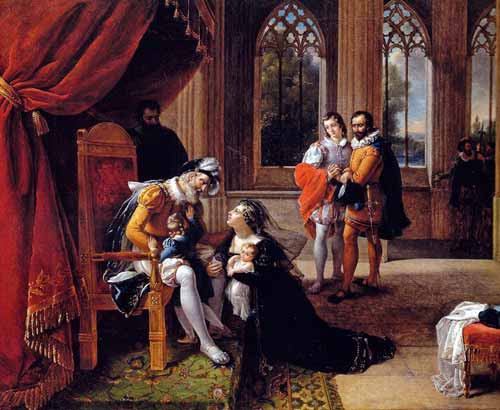
King Alfonso began insisting on his son to leave Inês. However, the Prince refused to succumb to his father’s will this time. Fate has decreed that Constanza dies after giving birth to her third child in 1345. The lovers made up their minds. They decided to get married, but the king and nobles would not allow it. They wondered how could Portugal’s heir of the throne marry a bridesmaid. All the pleas of Prince Peter to make his father change his mind were turned down. Things worsened between them until it reached the point of estrangement. The king’s anger and resentment only fueled Peter’s love for his illegitimate children, in contrast to his royal children, from his wife queen Constanza.
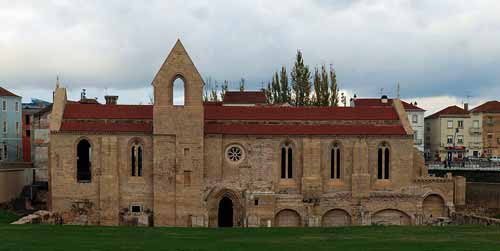
Finally, the king decided to put an end to the whole thing. He was determined to kill Inês. He discussed the matter with his chancellors, three nobles volunteered to kill her. Prince Peter had hidden her and her children in a Monastery, but the king’s spies got to her.
In one fateful night of 1355, the three nobles went to the monastery and went into Inês’ room while Prince Peter was absent. They killed and beheaded her in front of her children and carried the head to the king.
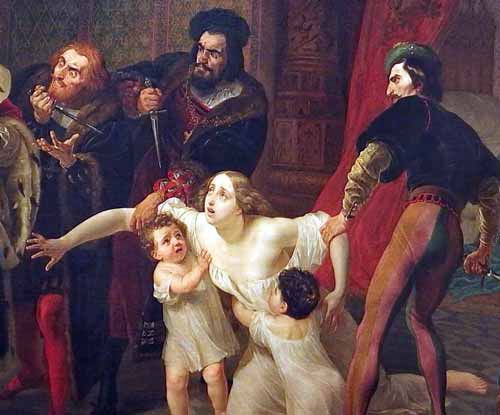
When Prince Peter returned to inspect Inês, he found a headless corpse, and his children terrified and sobbing. He went mad. He decided to take revenge even if it was the last thing he had to do in his life. He soon gathered an army and declared war on his father. There was a violent bloody war between the two parties, the king was victorious, but not for a long time, as suddenly a disease got to him, and took his life. The Prince was crowned as the king of Portugal under the name of King Peter I. As soon as he sat on the throne, the first thing that Peter did was to revenge the death of Inês. He sent his men to search for the three nobles who beheaded her. Two were arrested, and the third managed to escape to Castile.
According to historians, King Peter killed the two assassins in an innovative and atrocious way. He tore their hearts with his bare hands while they were still alive. He took out the heart of the first from the front of his chest, while he took the heart of the second through his back. It was said that he did so because the great pain they caused to his heart by killing Inês.
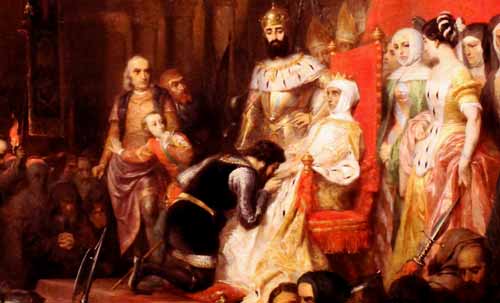
The first thing he did was atrocious, but the second thing was far more atrocious. Peter took the body of Inês out of her grave, returned her head to her body, clothed her in a queen’s clothing, sat her died body on the throne next to him. Then, he ordered the elders and the nobles of Portugal to come forward one by one, kiss her hand and pledge allegiance to her as a queen. Thus, the bridesmaid whom they hated and refused as queen when alive was declared so as a rotten corpse!
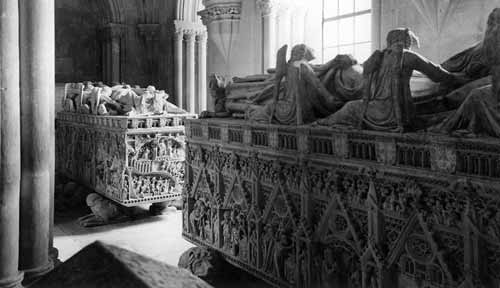
King Peter rule lasted for another 10 years. Before his death, he had ordered the construction of two very beautiful graves in one of the cathedrals, for Inês and himself. He also ordered that they should be buried in a position to face each other. Moreover, he ordered for a piece of marble to be put between them on which he wrote: “Until the end of the world”…
 kabbos
kabbos
